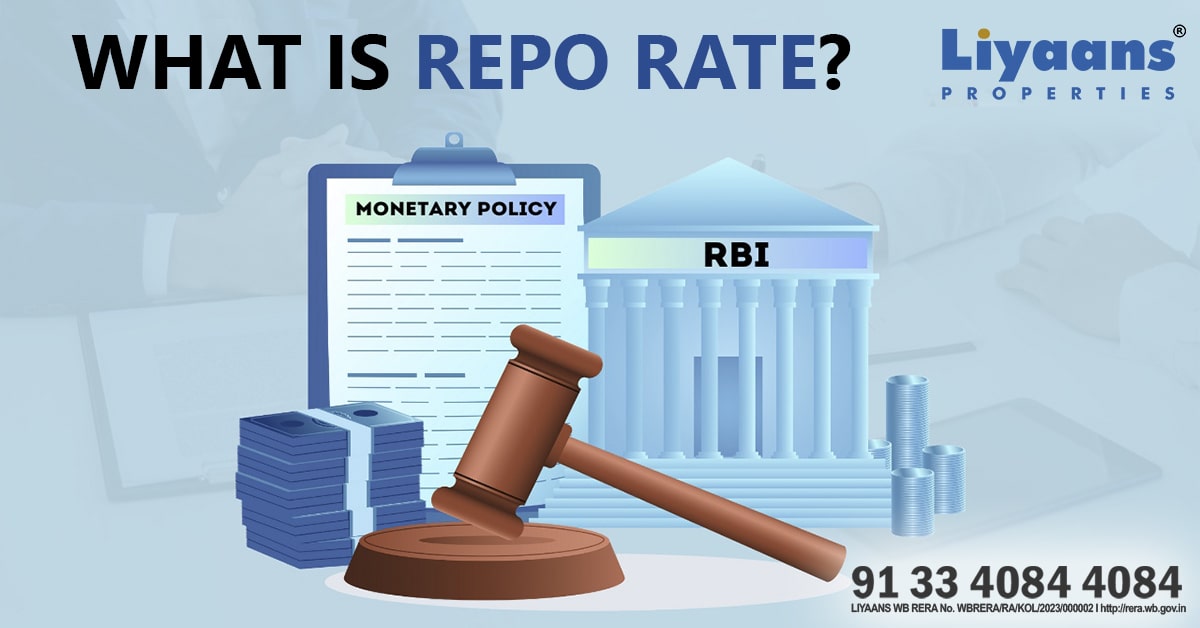Understanding Repo Rate: Impact on Loans and Economy Explained
Posted Under Home Loan Tips, Home Buying Tips, Real Estate Rules & Regulations, Real Estate On 15 October, 2024
In its October 9, 2024 meeting, the RBI’s Monetary Policy Committee (MPC) decided to keep the repo rate steady at 6.50 percent for the tenth time in a row. This decision offers relief to home loan borrowers, but what exactly is the repo rate, and how does it affect home loan interest rates?
How the RBI Uses the Repo Rate to Regulate Lending?
The Reserve Bank of India (RBI) regulates the country's money supply and determines lending rates, which dictate the cost of borrowing for individuals and businesses. Along with managing currency circulation, the RBI plays a key role in setting the rates at which loans are issued.
The RBI doesn't lend money directly to the public but serves as a financial bridge for commercial banks. When banks face a funds shortage, they borrow from the RBI to maintain smooth access to loans for consumers. The interest rate at which the RBI lends to these banks is called the repo rate, which currently stands at 6.50 percent as of October 9, 2024.
How Does the Repo Rate Affect the Real Estate Market?
Changes in the repo rate affect all sectors, including real estate. Higher lending rates can deter buyers, as the cost of purchasing property increases with higher loan interest rates. Amid rising inflation, the repo rate was raised six times in FY 2022-23, totaling a 250 basis point hike. Starting in May 2022, the rate saw further increases in June, August, September, December 2022, and February 2023, as the government acted to curb inflation and maintain steady cash flow in the economy.
In the last ten Monetary Policy Committee (MPC) meetings, the RBI has kept the repo rate steady at 6.50 percent, unchanged since February 8, 2023. The meetings occurred on April 6, June 8, August 10, October 6, and December 8 for FY 2023-24, and on April 5, June 7, August 8, and October 9 for FY 2024-25.
The RBI's decision to maintain the repo rate is aimed at preserving stability, especially with the festive season approaching. By keeping rates steady, the RBI seeks to ensure consumers have the buying power to invest and spend, thereby supporting overall economic growth.
By LNN (Liyaans News Network)
-
December 2025 (1)
-
November 2025 (3)
-
October 2025 (2)
-
September 2025 (1)
-
August 2025 (4)
-
July 2025 (2)
-
June 2025 (4)
-
May 2025 (3)
-
March 2025 (2)
-
February 2025 (5)
-
January 2025 (1)
-
December 2024 (3)
-
November 2024 (1)
-
October 2024 (2)
-
September 2024 (1)
-
August 2024 (1)
-
July 2024 (5)
-
June 2024 (2)
-
May 2024 (6)
-
March 2024 (2)
-
February 2024 (1)
-
January 2024 (3)
-
December 2023 (4)
-
November 2023 (3)
-
October 2023 (4)
-
August 2023 (4)
-
July 2023 (2)
-
June 2023 (4)
-
May 2023 (2)
-
April 2023 (2)
-
March 2023 (2)
-
January 2023 (1)
-
December 2022 (1)
-
November 2022 (1)
-
October 2022 (3)
-
September 2022 (3)
-
August 2022 (4)
-
July 2022 (5)
-
June 2022 (7)
-
May 2022 (2)
-
April 2022 (3)
-
March 2022 (6)
-
February 2022 (2)
-
January 2022 (7)
-
December 2021 (2)
-
November 2021 (4)
-
October 2021 (3)
-
September 2021 (4)
-
August 2021 (3)
-
July 2021 (3)
-
May 2021 (2)
-
April 2021 (1)
-
February 2021 (1)
-
January 2021 (1)
-
November 2020 (1)
-
October 2020 (1)
-
September 2020 (1)
-
August 2020 (3)
-
July 2020 (6)
-
June 2020 (4)
-
May 2020 (5)
-
April 2020 (5)
-
March 2020 (2)
-
February 2020 (3)
-
January 2020 (2)
-
December 2019 (4)
-
November 2019 (3)
-
October 2019 (1)
-
August 2019 (1)
-
July 2019 (1)
-
June 2019 (8)
-
May 2019 (5)
-
February 2019 (1)
-
January 2019 (1)
-
October 2018 (1)
-
September 2018 (3)
-
August 2018 (1)

